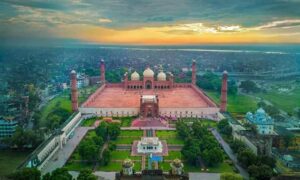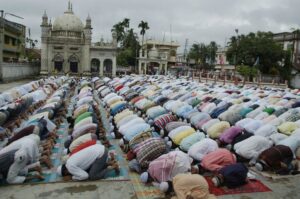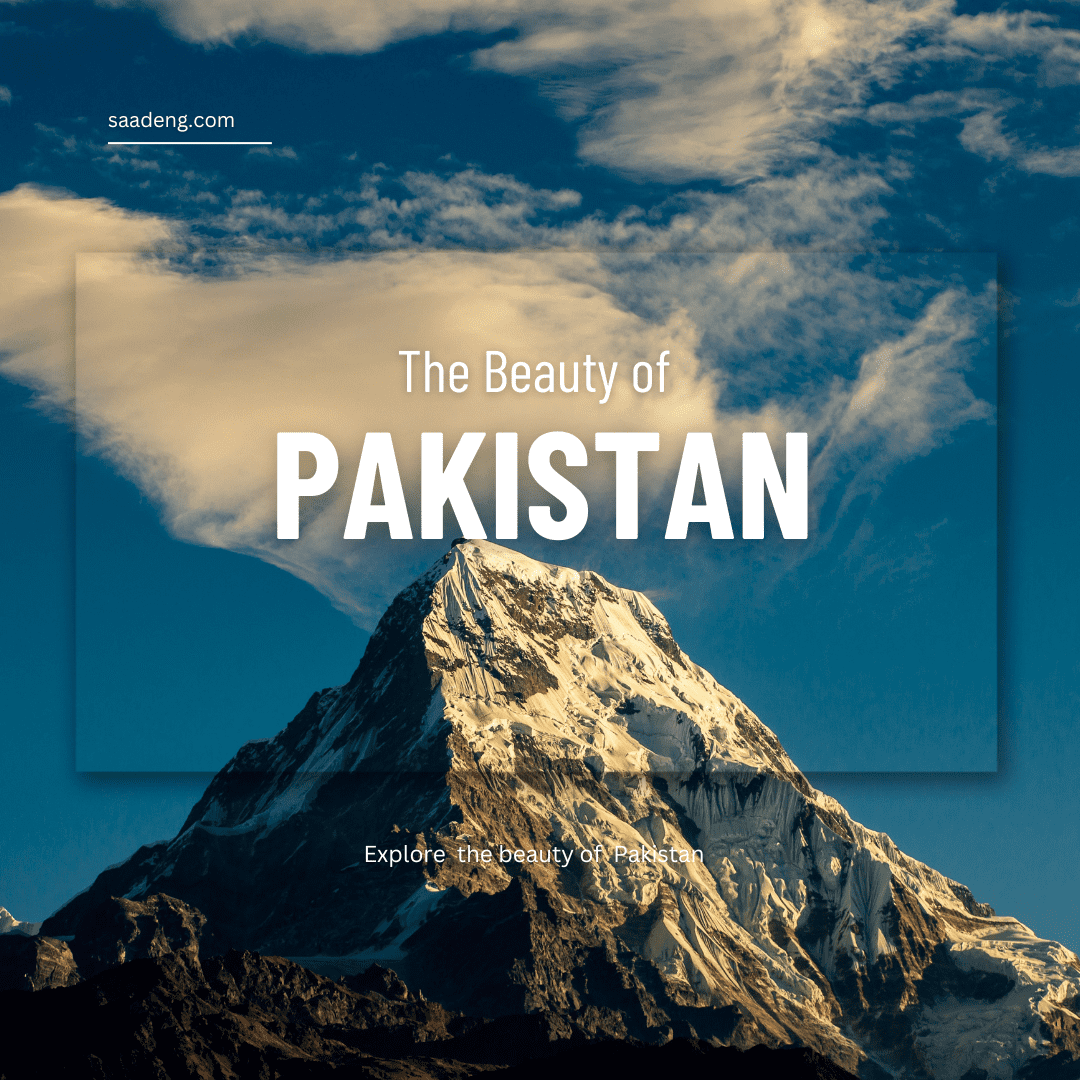The Beauty of Pakistan. Pakistan is a country with amazing natural beauty, an alive culture, and astonishing diversity. Pakistan presents a distinctive fusion of natural beauty, heritage of culture, and modern development, encompassing both bustling urban centres and snow-capped mountains. In this piece, we’ll examine Pakistan’s diverse beauty from a number of angles that genuinely set this nation apart.
The Beauty of Pakistan in 15 points
Pakistan is a extremely beautiful country and it is present in top 50 beautiful countries of world. Here are some points that show why Pakistan is beautiful and why you should explore it.
Majestic Mountain Ranges

The Hindu Kush, Karakoram, and Himalayan mountain ranges are among among the most beautiful in the globe and are all accessible in Pakistan. Along with being beautiful to behold, these mountain ranges provide site to a number of the the world’s tallest peaks, include K2. For people who love natural beauty, northern areas involve untouched scenery, hiking routes, and exciting activity possibilities.
Lush Valleys
Swat, Hunza, and Neelum regions are well known due to their stunning scenery. These areas are excellent for those who enjoy the outdoors, including verdant meadows, glistening rivers, and blossoming flowers. The picturesque settings offer a tranquil haven and are well-liked by visitors from both domestic and foreign countries.
Breathtaking Deserts
The nation’s lush valleys and mountains covered in snow offer an impressive contrast to Pakistan’s unique desert regions like the Thar Desert and Cholistan. A fascinating setting is generated through glittering skies, beautiful sands, and towering dunes. In addition, festivals are held within these areas to demonstrate the colourful traditions of the surrounding tribes.
Historical Monuments and Architecture
Pakistan is a country grounded in history, filled with beautiful structures and historic sites. A few example are the magnificent Lahore Fort, the Mughal-era Badshahi Mosque, and the historic town of Mohenjo-Daro. These buildings offer an insight into the nation’s rich historical past and reflect its diversity.

Lively Cities and Urban Culture
Pakistan’s urban areas, especially Islamabad, Lahore, and Karachi, are flourishing centres of contemporary life, trade, and art. The “Heart of Pakistan,” Lahore, is famous for its active marketplaces, historical sites, and rich culture scene. The largest city, Karachi, is a hub of culture with bustling shores, malls, and a wide variety of food.
Picturesque Beaches and Coastal Areas
A few of Pakistan’s gorgeous beaches may be found along its coast, especially along the Arabian Sea. Breathtaking sunsets, blue seas, and peaceful ocean views may be found in Gwadar, Clifton Beach, and Kund Malir. Such coastlines are ideal for beach excursions, water activities, and relaxing vacations.
Rich Cultural Heritage
The cultural legacy of Pakistan is a multi-colored tapestry influenced by Persian, Greek, Mughal, and British civilisations. The traditional music, dancing, artwork, and festivals of the nation all showcase this unique cultural mix. Celebrations of holidays such as Basant, Eid, and Shandur Polo Festival are held with tremendous fervour, exhibiting the nation’s colourful customs.
Diverse Wildlife and National Parks
Pakistan is endowed with a wide variety of species, such as the fragile Indus River dolphin, Himalayan ibex, and snow leopards. Many national parks throughout the nation, such as Margalla Hills National Park, Deosai National Park, and Hingol National Park, preserve these species while providing visitors with breathtaking views of the surrounding landscape.
Traditional Cuisine
A delicious fusion of flavours, spices, and cooking techniques characterises Pakistani traditional cuisine. Foodies all across the world, including those in the country, adore dishes like biryani, nihari, kebabs, and karahi. Because every area has a distinct speciality, Pakistani food is full of flavour and unique.
Festivals and Celebrations
Pakistani culture is replete with colourful holidays and festivals. These festivals, which range from religious celebrations like Eid-ul-Fitr and Eid-ul-Adha to artistic festivities like Lok Mela and Basant (the kite festival), unite people in happiness and peace. The events highlight traditional food, dancing, or music, enhancing the nation’s diversity of culture.

Hospitality and Warmth of the People
The welcoming nature of the residents of Pakistan is among their greatest charms. Pakistanis are renowned for being welcoming and giving to visitors. People are willing to share their food, experiences, and traditions among you, regardless you’re in a big metropolis or a little village.
Spiritual Sites and Religious Harmony
Pakistan is home to many spiritual and religious sites, including mosques, temples, gurdwaras, and churches. The country is known for its religious diversity, and places like the Faisal Mosque in Islamabad, Kartarpur Corridor, and the ancient Katas Raj Temples attract visitors of different faiths, reflecting a spirit of religious harmony.
Folk Art and Handicrafts
Pakistani traditional art and handmade goods are widely recognised for their exquisite patterns and artistry. Crafts such as Sindhi ajrak, Balochi needlework, Peshawari chappal, and Multani pottery exemplify the rich cultural legacy of many regions. They are lovely mementos that capture Pakistan’s creative spirit.
Adventurous Tourism Opportunities
There are several chances for adventurous tourism in Pakistan, including camelback riding through the Thar Desert and trekking in the Himalayas. Adventure seekers from all over the world flock to the northern regions for activities like skiing, paragliding, and mountaineering.
Serene Lakes and Rivers

Pakistan’s lakes and rivers, such as Saif-ul-Muluk, Attabad Lake, and the Indus River, add to the country’s natural charm. These water bodies offer stunning reflections of the surrounding mountains and are ideal for activities like boating, fishing, and photography.
Conclusion
Pakistan’s magnificent landscapes, variety of cultures, historical depth, and friendly populace all harmoniously combine to create a beautiful country. Each aspect of Pakistan, be it the peaceful deserts, the energetic metropolis, or the majestic mountains in the north, has something distinctive to offer. Travellers, historians, thrill seekers, and lovers of the nature are all welcome to discover the delights of this varied and captivating nation.
FAQs
-
What is the most beautiful place in Pakistan?
Although Pakistan has numerous attractive locations, the Skardu region, Hunza Valley, and Swat Valley are frequently cited as some of the most gorgeous because of their breathtaking scenery and tranquil atmosphere.
-
Is Pakistan safe for tourists?
Yes, there are safe tourist areas throughout much of Pakistan. International visitors particularly like visiting the northern regions. Before making vacation plans, it’s a good idea to review local regulations and travel advisories.
-
What is the best time to visit Pakistan?
The region you want to explore will determine when is the best time to visit Pakistan. The best season to explore the northern regions is from May to October, while the southern parts can be visited in November through February, when it’s cooler.
-
What kind of activities can tourists do in Pakistan?
Numerous activities are available to tourists, including as hiking, mountaineering, touring historical locations, going to cultural events, and participating in water sports near the coast.
-
Which Pakistani food should I try?
A few must-try Pakistani cuisine consists of kebabs, nihari, biryani, karahi, and traditional sweets like jalebi and gulab jamun. Every area offers a unique gastronomic experience, with its own specialities.
Pakistan, with its diverse beauty, offers a captivating experience for anyone looking to explore its many facets, from natural wonders to cultural heritage.
